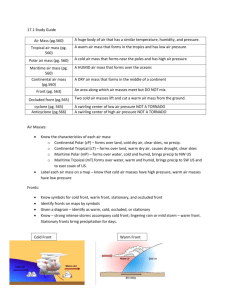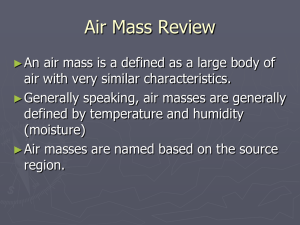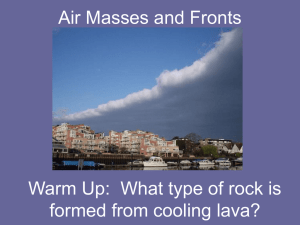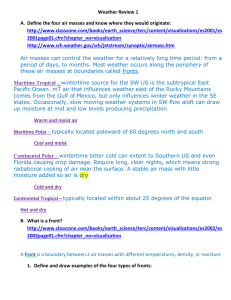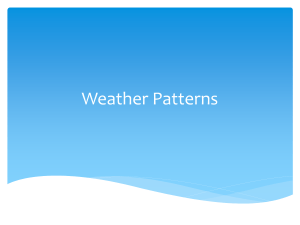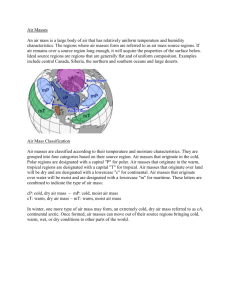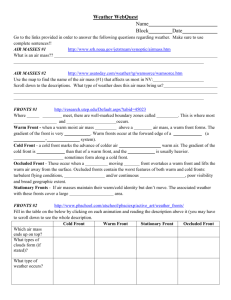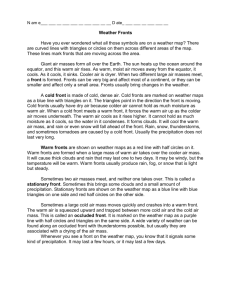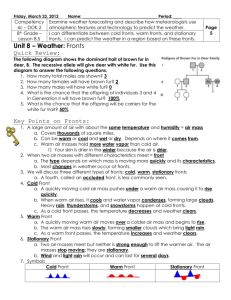File
advertisement
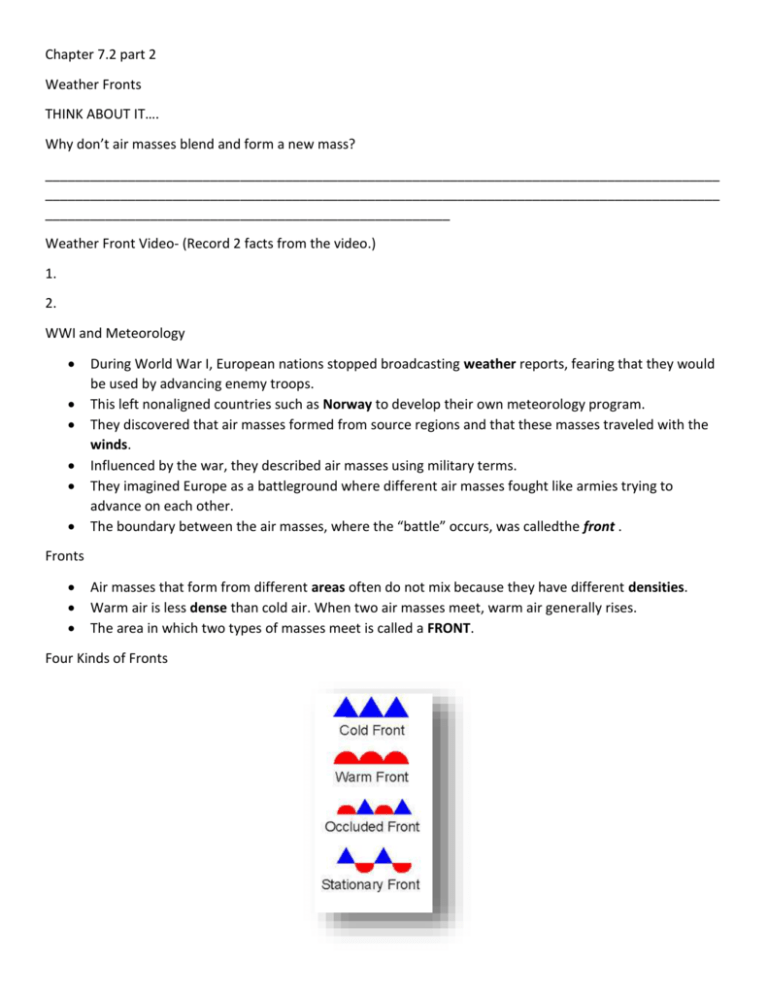
Chapter 7.2 part 2 Weather Fronts THINK ABOUT IT…. Why don’t air masses blend and form a new mass? __________________________________________________________________________________________ __________________________________________________________________________________________ ______________________________________________________ Weather Front Video- (Record 2 facts from the video.) 1. 2. WWI and Meteorology During World War I, European nations stopped broadcasting weather reports, fearing that they would be used by advancing enemy troops. This left nonaligned countries such as Norway to develop their own meteorology program. They discovered that air masses formed from source regions and that these masses traveled with the winds. Influenced by the war, they described air masses using military terms. They imagined Europe as a battleground where different air masses fought like armies trying to advance on each other. The boundary between the air masses, where the “battle” occurs, was calledthe front . Fronts Air masses that form from different areas often do not mix because they have different densities. Warm air is less dense than cold air. When two air masses meet, warm air generally rises. The area in which two types of masses meet is called a FRONT. Four Kinds of Fronts COLD FRONT A COLD FRONT forms when... • cold air moves under warm air • pushes the less dense warm air up Weather that cold fronts bring…. • thunderstorms • heavy rain • snow • cooler/drier air mass behind it WARM FRONT A WARM FRONT forms when... • • warm air moves over cold denser air warm air gradually replaces cold Weather that warm fronts bring… • • drizzly rain followed by clear and warm weather OCCLUDED FRONT An OCCLUDED FRONT forms when... • a warm air mass is caught between two colder air masses • the coldest air mass moves under and pushes up the warm air mass • coldest air mass moves forward until meets a cold air mass that is less dense then pushes the lesser cold mass up Weather that occluded fronts bring... • • large amounts of rain/snow cool temperatures STATIONARY FRONT A stationary front forms when... • • Cold air mass meets warm air mass Neither has enough force to lift the warm air mass over the cold air mass • Fronts “stay” separated because not enough wind to keep air masses pushing against each other Stationary fronts bring... • many days of cloudy & wet weather Comprehension Check List and describe the four types of fronts? 1. 2. 3. 4.
